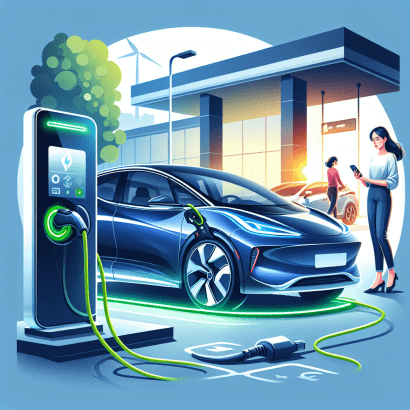
Electric vehicles (EVs) have become a major talking point within day-to-day motoring as a viable option for drivers around the world. Despite growing popularity in the transport and logistics sector, less than 2% of European business fleets are electric.
However, the industry as a whole has been exploring and switching to alternative fuels much sooner than general motorists. Clean fuel vans, trucks, and buses in the European Union have seen steady growth since 2014, and as light commercial vehicles were the fastest to adapt to alternative fuels, they’re further ahead than alternatively fueled HGVs in 2023.
Fleets all around the world are on the hunt for cleaner energy for their vehicles, but who has already made the switch? Are there benefits to a staggered switch, as businesses look to gradually reduce the number of ICE vehicles but don’t want to risk productivity and efficiency with one large-scale change?
Dover Fueling Solutions explore the potential benefits of experimenting with various different fueling options.
Who has already switched to alternative fuels?
Diesel is still heavily relied on for HGVs, with fleets utilizing alternatively fueled vehicles in much smaller numbers. Switzerland only had 77 electric trucks on the road in 2021, according to research from IHS Markit, yet it was still the largest number of the selected European countries studied. While EV trucks are expected to account for 30% of all light-duty vehicles in 2030 and 54% by 2035 in Western Europe, the same HGV predictions are 14% EV by 2030 and 35% by 2035.
Liquefied natural gas (LNG) and compressed natural gas (CNG) are two of the most viable substitutions to diesel for HGV fleets, and while CNG and LNG powered vehicles are most popular within Middle-Eastern and Asian markets, some concentration has been seen in Western Europe.
Two countries that have shown significant growth in the adoption of LNG and CNG HGVs are Poland and Hungary. National plans submitted to the European Commission show that by 2025, Poland and Hungary will be leading the charge on LNG use in heavy-duty transport, with forecasts of growth of 12,000 vehicles. This includes an additional 431 refueling stations to account for this uptick in fleet numbers.
Another alternative fuel that is growing in popularity for fleets is hydrogen, a zero-carbon gas that is one of the most abundant elements available. This makes it a fantastic candidate for a fuel that could displace diesel, and many businesses have begun experimenting with it for commercial purposes.
Hyzon Motors are a developer of fuel cell technology and a global supplier of zero-emission HGVs, and in a recent trial run saw one of their trucks complete a journey of over 540 miles from Temple, Texas to Dallas in over 100 degree Fahrenheit temperatures.
Fleets fueled by alternative fuels have primarily been seen within business-to-consumer (B2C) spaces, with delivery companies and retail brands taking note of shifting consumer outlooks and behaviors. Two great examples are global delivery brands and , which have committed considerably to CNG and LNG, adding more gas-powered vehicles to their fleets. Similarly, globally renowned and established companies Amazon, FedEx, Ikea, and Best Buy have also .
How staggered switching overcomes adoption barriers
An issue that many fleets encounter when investigating how they can make their vehicles cleaner is associated costs, especially if looking to use EVs. The combination of price and charging downtime concerns and whether they can achieve the same range as traditional ICE vehicles are a huge barrier for many businesses.
This is where staggered switching could be a fantastic solution for these businesses. Using hydrogen-powered or ICE vehicles for long-distance journeys while you can phase in the EVs for shorter routes allows you to have space to grow. At the same time, the industry continues to expand, and electric HGVs become even more of an option.
One of the major issues is refueling infrastructure is more equipped for traditional petrol and diesel vehicles than for EV recharging or alternative fuels like hydrogen, LNG or CNG. Staggered switching can lift some of the weight of this concern, as businesses can gradually incorporate alternative fuel vehicles depending on the length of the journeys required and locations of refueling points on the way.
There could also be regional differences that make switching easier in certain parts of the world compared to others. A report by Webfleet Solutions found that 70% of light vehicle fleets, including business cars, could be switched to EVs. This is a huge contrast to the average within Europe of around 61%.
Many business owners and fleet managers are still uncertain about which fuels will be the future of HGVs, but this is where the benefits of staggered switching can be seen. Not committing to just one alternative fuel leaves breathing room to keep using traditional ICE vehicles while experimenting and exploring several options before investing directly into the solution.

